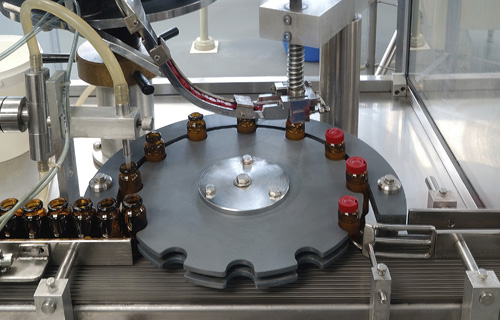Customer Requirement
The production of eye drops requires periodic sterilization of the bottle filling station with careful monitoring of the steam used for sterilization. The bottle filling station uses 20 nozzles to fill a progressive line of plastic bottles. Periodically, the nozzles are lowered into the sterilization chambers located directly below the station. Here the nozzles are exposed to steam to sterilize them. In this SIP (sterilize in place) application, the environment to be measured consists of 80º C purified water followed by 123º C clean steam at 20 psi for 30 minutes. The customer had to ensure that the sterilization process kept the equipment at 123º C for 30 consecutive minutes. The customer was experiencing problems with the accuracy of the temperature readings. They approached their local Conax representative to see if we could correct their problem.
Conax Design Solution
Upon investigation, Conax engineers quickly realized that the problem was due to the insertion depth of the sensor element. The customer’s probe used a wire wound RTD element. Because of the construction of a wire wound element and the way the customer had located the probe into the steam flow, the element was not far enough into the stream to give a correct reading.
Conax solved the problem by providing a probe with a thin film RTD element. With a thin film element, the tube is created first, then the element is placed and the tube is filled with Al2O3 powder around the element. The entire assembly is then sealed with a potting compound. This process allows the element to be placed at the very end of the probe. In an application such as this one, with very little space allowed for probe immersion, the thin-film style probe assures superior accuracy in the temperature readings.

